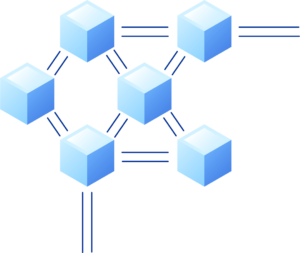If you’re reading this, it’s likely that you understand as a content writer to succeed you need to have a strong online presence and create effective content for your audience.
Maybe you have just started out or are one of those writers ho haven’t figured out the ropes of creating effective content.
Either way, your goal is to create content that stands out and delivers on its promise.
Are you struggling to create content that is both compelling and effective?
You’re not alone.
Many people find it difficult to strike the right balance between informative and interesting.
However, creating great content doesn’t have to be as complicated as you might think.
In fact, there are just a few simple steps that ANYONE can follow to produce content that will engage and resonate with their audience.
First, let’s start with what makes content compelling.
In order to draw readers in, your content must be interesting, useful, and visually appealing.
That means writing headlines that are catchy and informative, using images or videos to break up the text, and making sure your overall style is engaging.
And finally, finding content ideas that cater to your readers.
How do you find good content ideas to create engaging content?

The first rule is always start with your personal interests and expertise.
Finding topics to write about can be simple as they come from your expertise and comfort zone.
E.g., if you are a travel blog writer – under travel blogs there are so many content ideas that one can write about.
- travel tips for parents with toddlers,
- traveling on a budget,
- packing tips for hassle free travel,
- apps every traveler should use on a solo trip,
- road trip planner guides and so much more
Find as a writer, what kind of travel topics interest you and you are good to go.
Now that you have some idea about generating content ideas and how to choose one
Let us break down the steps to create effective content aimed at the target audience and delivers on its promise.
Step 1: Understand Your Audience
Every content writing post that gives tips on content writing says understand your audience. But what exactly does that entail?
It means, you need to know who you’re writing it for.
This might be simple for some topics, but it needs to be done.
Understanding who you’re writing for is a key factor in determining what type of content you should write, as well as what methods you should use to reach your audience. Let us break it down with an example.
There are lots of food blogs that share tips and recipes.
But for a working professional who has very limited time for cooking, a student or someone who has just started to cook, all those food blog writers who provide recipes for one pot meals, or using leftovers to whip up a meal, and cooking a meal with just 3 or 5 ingredients will be the go to source.
If you are one such writer then you are exactly writing for that audience.
Therefore, before you start writing-The first step towards effective content creation is understanding your audience.

You need to ask yourself many questions. How old are they? What kind of job do they have? What is the affordability?
Search and read posts that are already written in that space.
Gather information on what kind of recipe pages are getting more views, what kind of comments are left behind, what kind of questions or cooking tips and requests are left in the comment box.
This is the data you need to examine and it will give you an idea what your audience is asking and accordingly churn more content in that area.
Step 2: Identify the Problem
The next step after identifying the audience is, step back and understand the problem you’re solving for your audience.
Your content needs to educate them on the pain points of their current situation, and show them how you’re the best solution.
Taking the food blog example again- your audience has the following problems-

- lack of time,
- new to cooking hence wanting something simple and easy to prepare,
- time and budget crunch as a student,
- shopping constraints due to lack of time hence want to cook wholesome food with few readily available ingredients.
- Providing simple one pot recipes with few ingredients or leftovers
- Cooking in a budget
- Minimum ingredients but maximum on health and nutrition
Are you ready to provide solutions that address their needs?
With this information in hand, you’ll be able to design content that your readers will love and find valuable in their lives.
The more you know about your visitors, it would be that much easier to create effective content that aligns with your audience’s needs.
Step 3: Find Your Topics
Once you know who you’re writing for, and what problem you are trying to address it’s time to figure out what you’re going to write about.
Here, I’m going to share one technique that has worked well for me in the past, and that I still use to this day.

I like to use mind maps for this. I make a list of topics, then write them down in the center of a page.
Then I start drawing lines between those topics.
I use the idea of a focus keyword as a way to get my wheels turning.
Ideally, you want to target a group of people who will benefit from your topic.
This will help you to figure out what your keywords are going to be.
Using the mind map you can churn out so many ideas such as,
- break fast recipes in a budget,
- weekend meals with 5 ingredients,
- late night healthy snacking recipes to keep you going,
- sandwiches and rolls with leftovers,
- no cooking recipes for lazy mornings,
You get the idea right??
Start with one of the central ideas listed above to chalk out an outline.- elaborate each point, write an intro and conclusion and viola! Your post is ready.
In such posts it always helps to provide alternates, customizations and substitutions to the base recipe so that one recipe can lead to X number of recipes for your audience and they would love it.
Step 4: What’s Your Goal?

Once you know who you’re creating content for, and you have everything sorted out in terms of ideas, outlines and topics, you have to know what your ultimate goal is.
Are you trying to sell a product or service?
Are you attempting to increase engagement on your social media accounts?
Or are you simply trying to become an industry expert and provide value to your audience in terms of information?
This is a step where so many people fail.
They create content without any goals because they think that if they just keep creating, they’ll magically be considered an authority on that subject and the audience will flock to their website.
Sorry, but that just doesn’t happen. Even if you’re “the best” at something, you still have to write in a way to get people to know, like, and trust you.
Your posts should reflect honesty and something you have tried and tested before you dish it out to your audience.
For e.g., I write on content writing tips and my goal is to reach an audience of those who have just started or want to start but are a little unsure of how to begin.
My final goal is to provide short content writing eBooks and courses for beginners.
So, I provide tips that I have tried, and have worked for me along with the mistakes I committed in this journey to help my audience writers learn.
They will have an idea of what works and what may not work.
All the posts that I searched for on content writing tips mostly say the same things like know your audience etc.. but nobody breaks it down for you.
That’s where I thought I can add value by simplifying and providing examples to explain each point
Aim for your content to be helpful.
Step 5: Choose the Channels to Reach Them
This is not exactly telling you how to create compelling and effective content but is an important step in deciding the content format.
It tells you what form of content you have to create so that it can reach your target audience.
The content format is based on the chosen platform.
Therefore, this step is one of the more difficult parts.
How to decide the content format so that it is effective and reaches the target audience for engagement.
![]()
Every social network has its own brand of humor, and you don’t want to lose your audience by forcing your content to fit into all of them.
For example, pictures with funny captions are all over Tumblr, but would go unnoticed on Facebook. As a result, look at what’s already working on each network to get an idea of what you should be doing.
You can’t just pick a platform and start promoting everything on it. You need to know your competition, or you may get eaten alive.
You can use Facebook’s Audience Insights to see what kind of content is getting engagement on similar pages. Then you can create even better content.
Similarly Twitter, LinkedIn, and website blogs, each have a content format that is so different from one another.
Once you’ve got an idea of what works on a given platform, you can decide what to promote.
Key takeaways and conclusion-
Effective content creation is easy if one keeps the following points in mind
- Decide your audience
- Generate content ideas and narrow down topics
- Address a problem for your readers by providing relevant solutions
- Have a clear goal
- Decide the content format based on the platform
So, what are you waiting for, pick up a pen and paper and start brainstorming to get your content up and running.

Excellent article. Thanks for the detailed explanation. It really helps newcomers like me who have just started to write.
Thanks Sirisha for your comments. Appreciate it
Pingback: What Is A Content Audit And Why Is It Important
Pingback: What Is A Content Hub: A Simple Guide
Pingback: Elementor #3781 - contentwork.net
Pingback: 5 Saas Content Ideas to Boost Audience Engagement - contentwork.net
Pingback: How to Create Brand Content That Converts
Pingback: The Ultimate Guide to eCommerce Content Creation to Boost Sales - contentwork.net